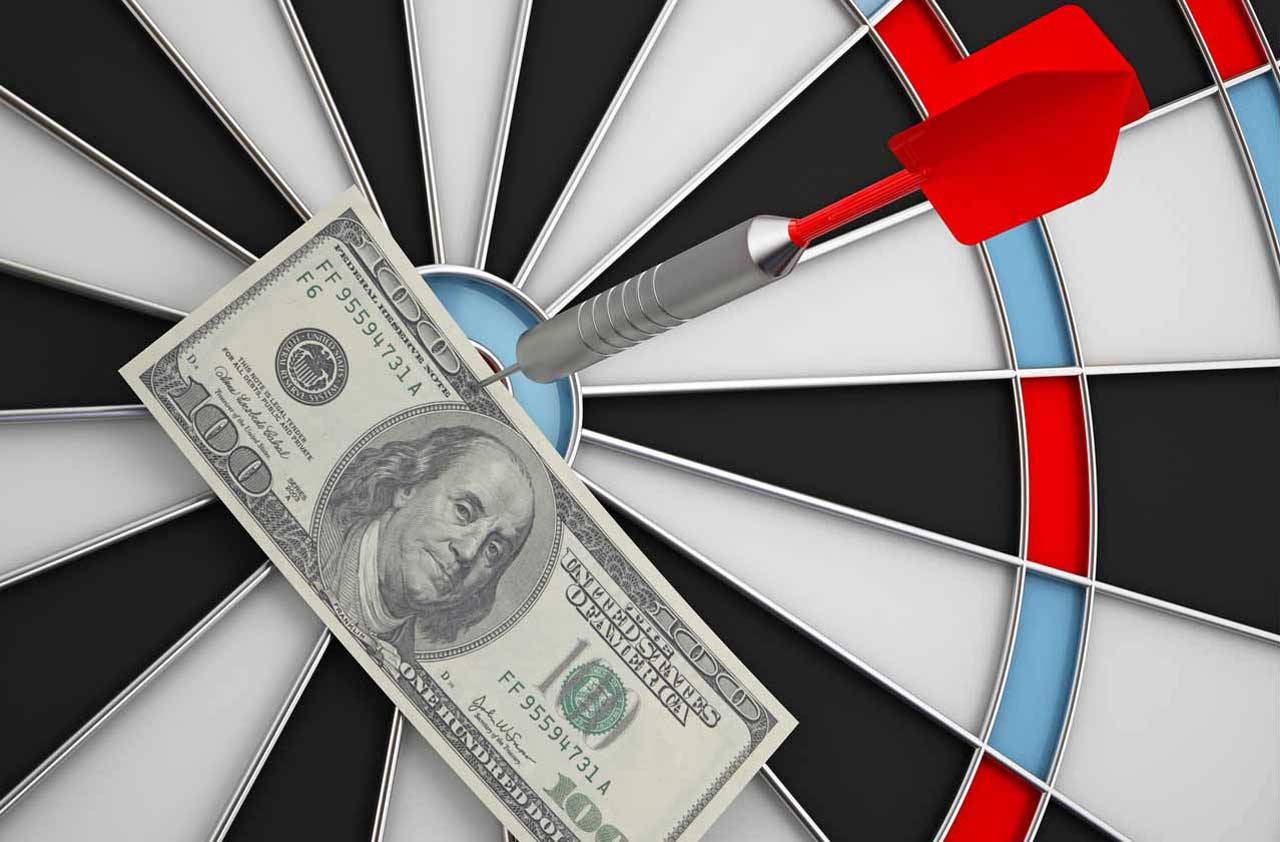How Much You Need to Save Annually to Build Your Own Wealth (and Where to Stash That Cash)
Here's the minimum we recommend putting aside to meet your (possibly early) retirement goals. Of course, if you're especially ambitious, it never hurts to aim even higher.

In my financial planning practice, most of our clients are young (in their 30s and 40s), making good incomes (usually $200,000 or more as a household), and ambitious with their savings goals (like the ability to choose whether or not they work at least a decade before they hit the official retirement age of 67). They’re also “first generation wealth builders,” meaning they’re the first in their families to actually have the ability to create and generate significant wealth in their lifetimes.
In other words, they weren’t born wealthy — and they can’t count on a big inheritance coming down to them later in life. They need to build up the assets they need to fund the lifestyle they want on their own.
Considering this, we have a lot of conversations about the importance of building up savings and investments for the long term. For these clients — and for anyone with big financial goals who can’t count on a rich aunt to leave a pile of cash behind — it’s critical to save a sufficient amount of money from their incomes now in order to enjoy the financial freedom they want later.
From just $107.88 $24.99 for Kiplinger Personal Finance
Become a smarter, better informed investor. Subscribe from just $107.88 $24.99, plus get up to 4 Special Issues

Sign up for Kiplinger’s Free Newsletters
Profit and prosper with the best of expert advice on investing, taxes, retirement, personal finance and more - straight to your e-mail.
Profit and prosper with the best of expert advice - straight to your e-mail.
But what is a sufficient amount? And if you have money you know you want to put away from the long term, where should it go?
The Minimum Amount to Invest for Long-Term Wealth Building
While everyone’s situation is different and there are no universally “right” answers in financial planning, we do have some common rules of thumb we use when determining how much to save for long-term needs and goals (like retirement or financial freedom).
The minimum we tend to recommend is putting aside 20% of gross income into investment vehicles. These funds are designed to stay invested for the long term; that means over the next 10, 20, even 30 years, that cash shouldn’t be pulled out of the market and used for something else or spent.
It’s important to set your goals in percentages rather than dollar amounts, because it keeps your finances relative. Regardless of income, you have a clear benchmark for your savings this way. Working with a percent as a goal is also a good way to guard against lifestyle creep; if your income goes up, your savings should too. Similarly, if you experience a drop in income, you don’t have to kill yourself trying to keep up with a sky-high rate of savings that’s outsized for your earnings.
Twenty percent is the minimum savings rate I recommend, but if you’re highly ambitious and have a lot of goals you want to accomplish (or a lavish lifestyle to maintain), then you may want to set your sights higher. We most commonly help clients come up with savings plans to get them putting away 25%-30% of their gross income into long-term investments to grow wealth.
This isn’t just talk, by the way; I follow my own advice in my personal life. My wife and I strive to save 40% of our gross business revenues each year, and we funnel this money into long-term investment vehicles we know we will keep invested into our 50s at least. It’s not always easy to do this and requires careful management of expenses, spending and budgets today.
But because we value freedom and autonomy, allocating such a large amount of our income to investments (while keeping other expenses, like rent and shopping, in check) aligns with those values. We’re motivated to stick to the plan, even when it’s hard or tempting to spend more money today, because it means getting closer to what’s most important to us in our lives.
Where to Stash the Cash Designed to Fund Your Life… Later
We use the term “long-term savings and investments” a lot. But what exactly does that mean? With money you have that you want to save “for the long term”... where does it go?
This list provides a good baseline of long-term investment accounts that you may be able to access and use:
- A 401(k) or other employer-sponsored retirement plan that may provide matching contributions.
- IRAs — either traditional or Roth IRA — depending on your goals, income level and desire to do backdoor Roth conversions.
- Health savings accounts, if you use a high-deductible health plan and can access an HSA (be sure to check with your employer if you have this plan, too; some will provide a contribution to employee HSAs, which will make it easier for you to max out this account).
- Non-retirement investment accounts (aka, taxable brokerage accounts).
- 529 plans, if you have children and funding some or all of their college education is a top-priority goal for you and your family.
Very generally speaking, you could start at the top of this list and max out each account if you weren’t sure where to put your money first. If you find you have more money available after maxing out your 401(k), for example, you could continue down the list and fund an IRA next.
Of course, the specifics of your situation may mean it makes more sense to fund these in a different order — or to not max out one account if that’s all you can fund, and instead fund a mix of accounts. It’s very important to also consider how these accounts are taxed, and how much cash you have going into something that will be taxed later versus how much money you put into accounts that have already been taxed. You want to make sure you balance the taxability of your assets; for my clients, I typically advise using a mix of tax-deferred, Roth and taxable accounts.
There isn’t a single, strict plan or a rule you must follow to achieve long-term financial goals ‐ but committing to saving at least 20% of your income (and up to 30% or even 40%) will help you build the foundation you need to enjoy a lot of freedom and flexibility down the road.
Profit and prosper with the best of Kiplinger's advice on investing, taxes, retirement, personal finance and much more. Delivered daily. Enter your email in the box and click Sign Me Up.

Eric Roberge, CFP®, is the founder of Beyond Your Hammock, a financial planning firm working in Boston, Massachusetts and virtually across the country. BYH specializes in helping professionals in their 30s and 40s use their money as a tool to enjoy life today while planning responsibly for tomorrow.
Eric has been named one of Investopedia's Top 100 most influential financial advisers since 2017 and is a member of Investment News' 40 Under 40 class of 2016 and Think Advisor's Luminaries class of 2021.
-
 The Santa Claus Rally Officially Begins: Stock Market Today
The Santa Claus Rally Officially Begins: Stock Market TodayThe Santa Claus Rally is officially on as of Wednesday's closing bell, and initial returns are positive.
-
 How to Leave Different Amounts to Adult Children Without Causing a Rift
How to Leave Different Amounts to Adult Children Without Causing a RiftHere’s how to leave different amounts to adult children without causing a family rift.
-
 My Retirement Learning Curve, 1 Year In
My Retirement Learning Curve, 1 Year InA retiree checks in with what they wish they knew early on and what they've changed about their plan one year in.
-
 Introducing Your CD's Edgier Cousin: The Market-Linked CD
Introducing Your CD's Edgier Cousin: The Market-Linked CDTraditional CDs are a safe option for savers, but they don't always beat inflation. Should you try their counterparts, market-linked CDs, for better returns?
-
 How to Protect Yourself and Others From a Troubled Adult Child: A Lesson from Real Life
How to Protect Yourself and Others From a Troubled Adult Child: A Lesson from Real LifeThis case of a violent adult son whose parents are in denial is an example of the extreme risks some parents face if they neglect essential safety precautions.
-
 To Build Client Relationships That Last, Embrace Simplicity
To Build Client Relationships That Last, Embrace SimplicityAs more automation becomes the norm, you can distinguish yourself as a financial professional by using technology wisely and prioritizing personal touches.
-
 Client Demand Is Forcing Financial Advisers to Specialize: How to Deliver
Client Demand Is Forcing Financial Advisers to Specialize: How to DeliverThe complexity of wealthy clients' needs — combined with AI and consumer demand — suggests the future of financial planning belongs to specialized experts.
-
 A Financial Planner Takes a Deep Dive Into How Charitable Trusts Benefit You and Your Favorite Charities
A Financial Planner Takes a Deep Dive Into How Charitable Trusts Benefit You and Your Favorite CharitiesThese dual-purpose tools let affluent families combine philanthropic goals with advanced tax planning to generate income, reduce estate taxes and preserve wealth.
-
 A 5-Step Plan for Parents of Children With Special Needs, From a Financial Planner
A 5-Step Plan for Parents of Children With Special Needs, From a Financial PlannerGuidance to help ensure your child's needs are supported now and in the future – while protecting your own financial well-being.
-
 How Financial Advisers Can Best Help Widowed and Divorced Women
How Financial Advisers Can Best Help Widowed and Divorced WomenApproaching conversations with empathy and compassion is key to helping them find clarity and confidence and take control of their financial futures.
-
 A Wealth Adviser Explains: 4 Times I'd Give the Green Light for a Roth Conversion (and 4 Times I'd Say It's a No-Go)
A Wealth Adviser Explains: 4 Times I'd Give the Green Light for a Roth Conversion (and 4 Times I'd Say It's a No-Go)Roth conversions should never be done on a whim — they're a product of careful timing and long-term tax considerations. So how can you tell whether to go ahead?
